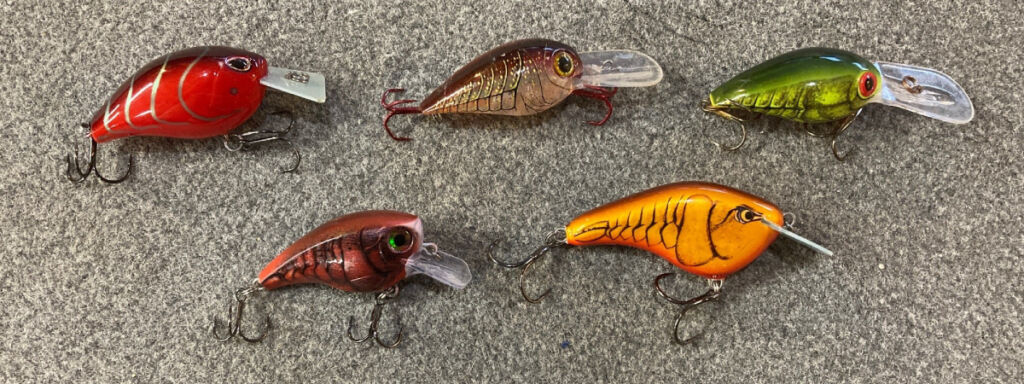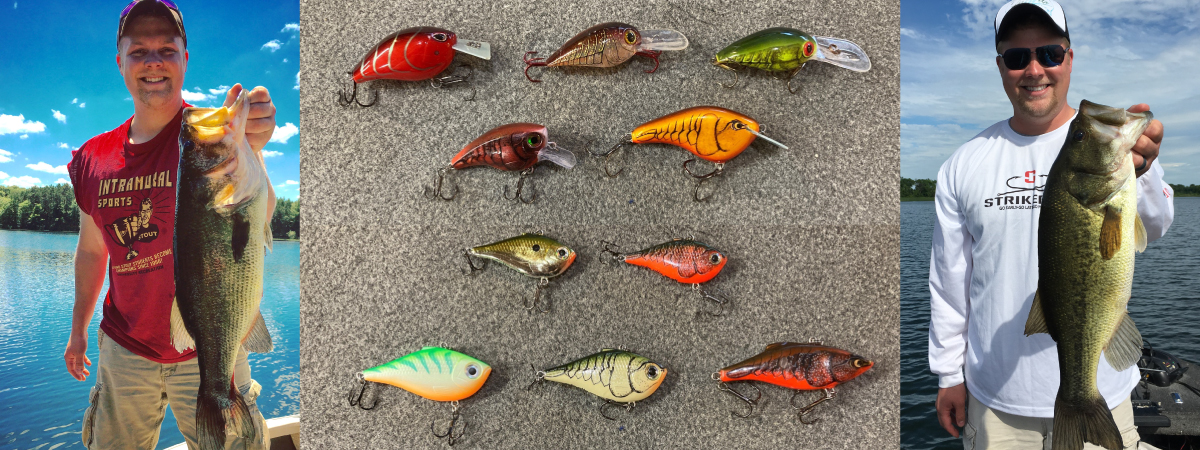Cranking Your Way to More River Bass
Mist from the baitcast reel erupted into the morning air as the crankbait rocketed toward the conspicuous riprap that hugged the edge of the river. As soon as the lure hit the water it was brought to life with a few cranks on the reel.
Instantly the wobble of the lure going back and forth could be felt in the rod tip. It didn’t take very long for the lipped crankbait to start digging in the rocky bottom. Tick, tick, wham! Fish on as the lure got to the edge of the swifter current and it feels like a good one as the fluorocarbon line is being stretched by the bull-dogging fish in the current.
Rocky areas, riprap, and wingdams are always hot spots in rivers as they will bust up the current as a whole and also in specific little areas. These will provide slack water for fish even amidst good current. Even a good sized boulder is enough for a fish to duck behind and they can easily remain there without having to exert much energy.
This gives them the opportunity to ambush into the moving water as food comes passing by them. Crawfish and minnows will also try to take advantage of the crevices to hide and take cover. Finding these areas in rivers can be key for consistent action.
Most rivers have an abundant amount of firm or hard bottom so sometimes it takes a little extra time to find the areas that not only have the ingredients but also the fish. This is where both covering water in the boat is important but also covering some water fishing.
This is where crankbaits can shine. Because crankbaits are a relatively compact design, they function well in moving water. They also cast well on both baitcasting and spinning gear giving you a lot of options on how you want to cast them.
Lipped designs

Baits such as the Storm wiggle wart are a tried and true river crankbait. Having the lure run true is critical on any water but especially in moving water as there are multiple forces working on it. By design, these baits will run true.
The wobble is one that will entice both large and smallmouth bass in river systems and because so they are longtime favorites of many top-notch tournament pros.
Professional guide, Tony Roach is a fan of the Rapala BX Brat for covering water for bass. This little balsa square bill bait casts well and runs very well in the water. “I really like the Brat for clean, clear river water. If the water is stained or dirty then I usually use a brighter bait with rattles as well,” say’s Roach.
For any crankbait you use, be sure of the primary depth of the river and choose a crankbait that can reach that depth. You’ll want to bounce off things and be close to the strike zone.
Lipless Designs

The lipless style crankbaits like the Rattlin Rap or Storm Arashi Vibe give anglers a lot of options in moving water. They cast like a bullet and can be jigged, ripped or steadily reeled in. Due to their design, you will be able to cover more water but you also must keep the lure moving.
Because of this you will catch mostly the active fish that are willing to pursue the bait. Great locales for these are long stretches of flats or no change in bottom. Fish will be scattered in these areas and these baits will allow you to cover water to find them.
When you do make contact with a fish, pay attention to where and how the fish are hitting your lures and try to duplicate that in other areas. Many times it is easiest to simply drift downstream and cast away at the bank hoping to make contact with some fish. This can and will work but it’s not always the most efficient method.
Sometimes as you are floating by a rock pile or type of major current break, you make a cast into the upstream eddy first that is slack water immediately before the structure. Fish will often-times school up on these types of areas. If you keep drifting downstream you miss the chance at more fish.
The next cast you make is right on the sweet spot where slack water is right tight with really fast current. Hungry active fish oftentimes will be right at this sweet spot. As you continue to drift downstream your next cast will be near the downstream eddy.
This is another place where schools can congregate as it gives many fish the opportunity to remain close to the action but not have to exert much energy. Make sure you have the ability to hang out in these areas with either an anchor or a powerful trolling motor.
As you drift downstream, and as you encounter more similar structures it makes sense to exploit the same side that produced results as previous ones. You’ll be surprised at how effective that can be. Everyday can be different but by cranking these areas you can be sure that you will make contact and have some fun.
Water Temperature
Always pay attention to water temperature and adjust your presentation speed accordingly. When the water is cold in the 50’s fish will be a little sluggish and won’t chase down baits. As the water starts getting into the 60’s they will be willing to move and chase more.
In the peak of summer (70’s), fish will have their highest metabolism and will move the most to track down their prey. Use this data to your advantage. Marcum MX-7GPS and LX-7L units will display water temperature when paired with the LX series open water transducer.








